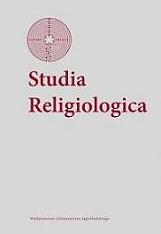The Differential Evaluation of Religious Risk Rituals Involving Serpents in Two Cultures
The Differential Evaluation of Religious Risk Rituals Involving Serpents in Two Cultures
Author(s): W. Paul Williamson, Christopher F. Silver, Ralph W. Hood, Jr.Subject(s): Christian Theology and Religion
Published by: Wydawnictwo Uniwersytetu Jagiellońskiego
Keywords: Serpent Handling Sects of Appalachia; Manasa Sect of Hinduism; Religious Risk Rituals; Perception; Behavior Evaluation; Psychology of Religion
Summary/Abstract: While serpent symbolism is common in many religious traditions, few traditions have including the actual handling of serpents that can maim and kill in their rituals. Two exceptions are various Manasa sects common in India and the serpent handlers of Appalachia in America. We presented brief descriptions of each of these traditions along with videos of the handling of serpents in each tradition under three degrees of risk, video with no serpents, video with serpents but no bites, video with serpents and bites. Under a fourth condition only for the Appalachian handlers, the video showed a handler dying from a bite. American, largely Christian participants rated assessed each condition for ritual quality and perceived legitimacy. As predicted, serpent handling in America was perceived as less legitimate than serpent handling in India. No differences were found between perceived legitimacy and level of risk except in the condition where a handler was seen dying from a bite.
Journal: Studia Religiologica. Zeszyty Naukowe Uniwersytetu Jagiellońskiego
- Issue Year: 46/2013
- Issue No: 1
- Page Range: 1–15
- Page Count: 15
- Language: English

